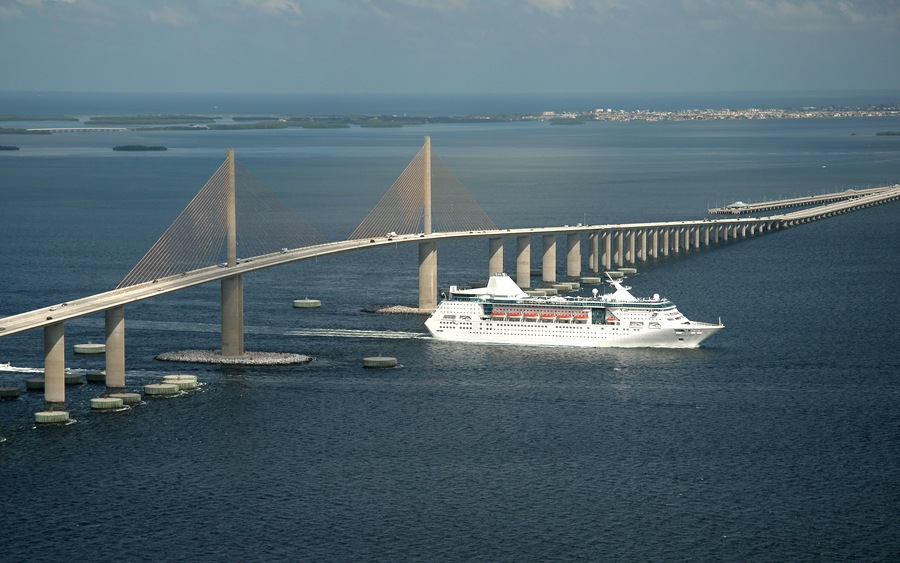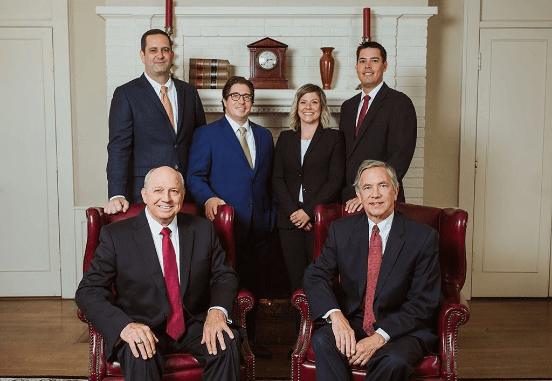
Last Saturday marked the 40th anniversary of the devastating Skyway Bridge disaster that took the lives of 35 individuals. The disaster still stands as one of the most tragic events ever to take place in Florida history and has taught us a lot when it comes to the construction of maritime and auto highways and bridge safety.
A portion of the Sunshine Skyway Bridge collapsed on May 9, 1980, after the freighter Summit Venture struck the bridge during a violent thunderstorm tearing a way a large portion measuring over 1,200 feet in length of the bridge’s surface. The harbor pilot who had been steering the ship had nearly zero visibility and put the ship’s engines into full reverse, and ordered the emergency dropping of the anchor. This caused the bow to hit two support piers with enough force to cause a portion of the roadway to collapse.
Drivers on the bridge heading home during rush hour reported being horrified as they saw the southbound lanes in front of them collapse out of nowhere and with no warning. Vehicles traveling across the bridge tried to stop before falling into the open waters below, but for many it was too late. Six cars, one truck and a Greyhound bus full of passengers all fell 150 feet into the waters of Tampa Bay below the bridge.
This case involved negligence of the Freightliner captain and was ultimately a maritime safety issue. After the tragedy, years of litigation followed. The ship owner faced wrongful death lawsuits filed by the survivors of those who died in the bridge collapse, a personal injury claim by the pickup driver, and a claim by the State of Florida, Department of Transportation, for millions of dollars for damage to the bridge.
The lawsuits asserted the bridge collapse was caused by the negligence of the ship’s owner and its crew. The owner of the Summit Venture argued that it was not at fault because the collision was caused by an “act of God,” essentially blaming the disaster on the violent storm that day. However, the judge concluded that the ship’s owner and crew were responsible and that the ‘act of God defense’ did not apply because the ship could have left the channel and anchored when the weather deteriorated. During the trial it was determined the captain should have taken charge and not relied on the pilot. It was further concluded that the ship’s owner improperly allowed its captain to rely on pilots.
Those who lost their lives that day, 23 of the 35 were traveling on a Greyhound bus. The Greyhound Bus was carrying around two dozen students from Alabama’s Tuskegee Institute now known as Tuskegee University. The students on the bus were traveling home to Florida upon the end of the school year. Sadly, these 23 students never made it home. The nine individuals in the other vehicles also did not survive. In fact, the only person who walked away from the incident was the man driving the truck that fell 150 feet into the water below.
The truck driver provided his account of that day, saying he was able to get out of his sinking truck and was pulled to safety by crew members on the Summit Venture. Other accounts have recently been provided by divers who assisted in the search and recovery efforts that grim day. Many still struggle to comprehend the trauma they endured that terrible day.
This disaster forced the state to realize that a new bridge design was needed to allow cars to safely travel over water. At the time of the collapse, the bridge was built on a cantilever system where steel trusses supported the weight of the load-bearing deck. All it took was for a massive object, such as the freighter, to hit a truss for the entire bridge to collapse.
Engineers from Figg and Muller Engineers, designed the new bridge based on a cable-stayed bridge system where the load-bearing deck is supported by cables extending along the bridge. The new construction began in 1982 and cost $244 million to complete. Workers brought in more than 300 precast concrete segments, linking them with 21 steel cables, supporting the weight of the concrete load-bearing slabs. The cables were encased in nine-inch-diameter steel pipes. The bridge is the longest cable-stayed concrete bridge in the world, with the entire bridge being composed of concrete and steel.
Other safety features make this design unique. For instance, the cables descend from two towers set in the middle of the bridge, with 40-foot roadways on each side. Having the cables in center and not the edge of the bridge, means that drivers on the bridge have an open view of the bay. The Sunshine Skyway Bridge is now 50 percent higher, making it 190 feet above the water. By bringing up the height of the bridge floor, ships can now pass safely underneath.
Bridge collapses can be devastating for those involved. Responsible parties can include the state, the company that designed the bridge, the company responsible for inspections and maintenance, and the contractor that built the bridge.
The cause of most bridge collapses is due to design or construction issues. If the design was not carried out as instructed and this caused the bridge to collapse, the construction firm could be held liable for damages. Contractors, builders, and sub-contractors have a duty to follow safety regulations and ensure construction site safety for employees, day workers and citizens on the premise and in the vicinity. Each engineering company and inspection company that worked on the bridge before its collapse can also be held liable for damages.

Legally Written and Reviewed by a Managing Partner
Wooten, Kimbrough, Damaso, and Dennis, P.A.
Our content is written and reviewed by our founding attorneys Butch Wooten, Orman Kimbrough, Mike Damaso, and Tom Dennis. Helping the injured since 1966, they’ve successfully handled thousands of personal injury cases across Florida. Whether you’re a Florida resident or an out-of-state visitor injured in Florida, we’re dedicated to providing clear and reliable information to help you navigate your legal options confidently.




